How to grow muscadine grapes – tips for successful planting, pruning and propagation
The muscadine grape is native to south-eastern US and a fantastic variety to grow in warmer climates


Muscadine grapes are a North American variety that have been cultivated for centuries. These plants are ideally suited to warm and humid conditions and the ripe fruits come in a range of sumptuous colors, from light bronze to dark purple and black.
It may not be surprising to hear that these vines want a hot and sunny spot in which to thrive and produce their sweet-yet-tart fruits. Grape vines are rewarding to grow but they do require training and pruning each season to keep them healthy and guarantee a quality harvest of fruit.
I looked after several grape vines during my time as a kitchen gardener. The fast-growing flowering vines were grown indoors in the greenhouse - predominantly due the climate in the north of the UK - as the vines were trained to climb the structure and they did give a good harvest each year.
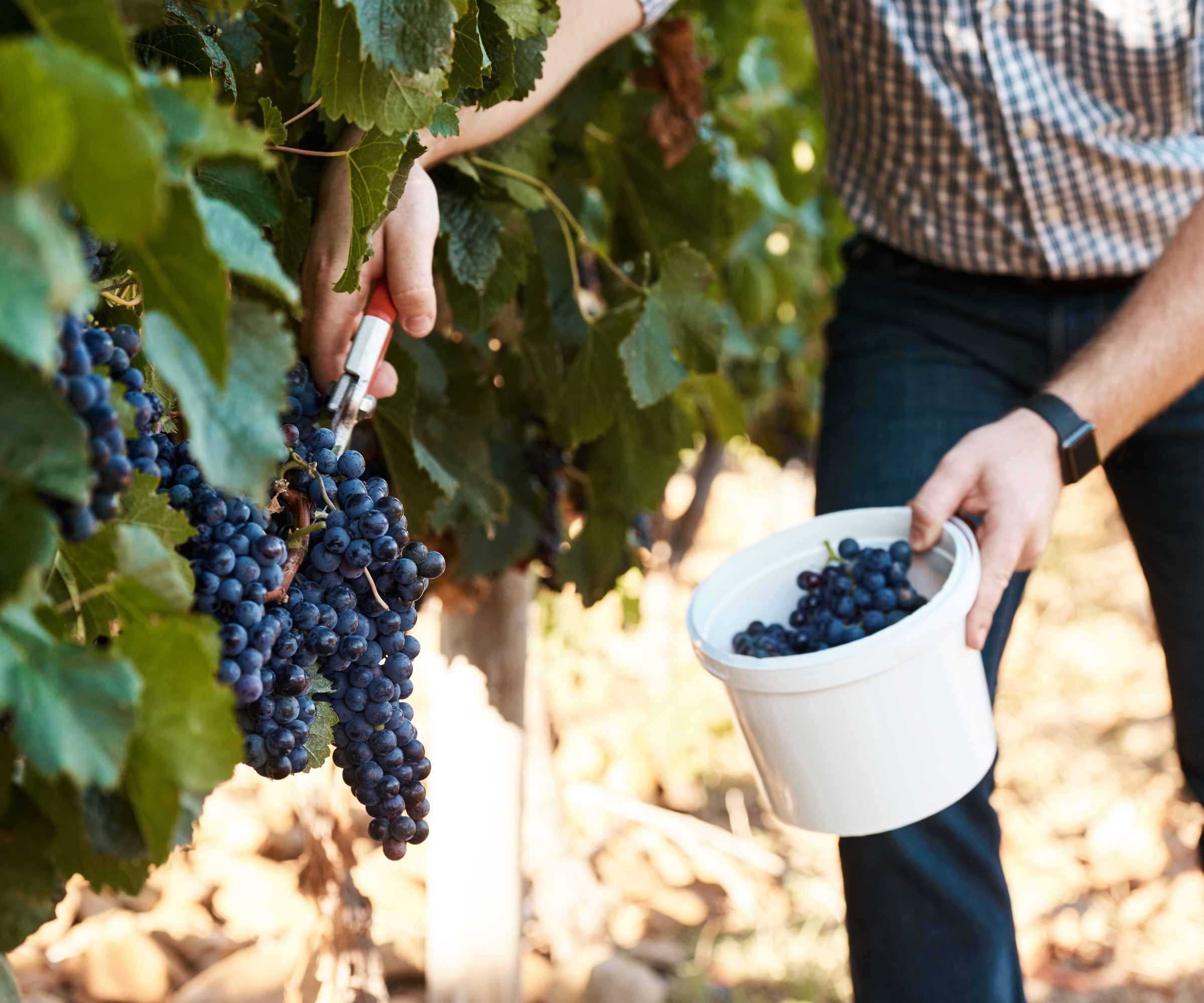
Muscadine grapes are heavy croppers once established
How do you grow muscadine grapes?
Muscadine grapes are native to the southern US and known for being plants that like warmth, so are ideal for warmer US hardiness zones. They are temperamental in colder, northern gardens and do tend to perform their best in zones 7-10. We take a close look at growing muscadine grapes and get some expert advice for planting and caring for these climbing plants.
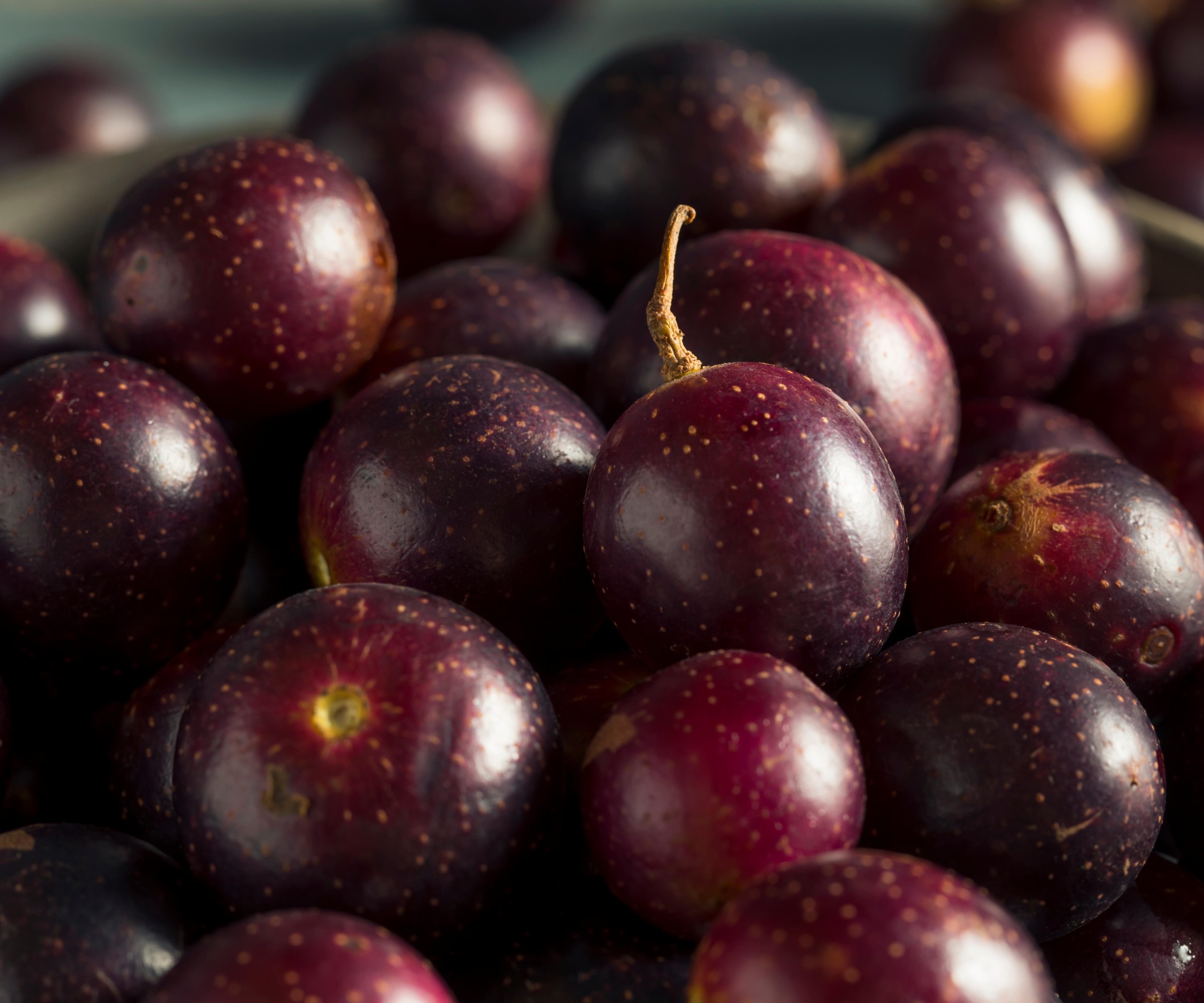
Many types of muscadine grapes are dark in color when ripe
How to grow muscadine grape vines
If you want to add muscadine grapes to your backyard ideas, there are a few avenues you can go down. There are thought to be over 100 different varieties to choose from, though it is important to do some research. Some types are self-fertile and can pollinate themselves, making them ideal for small backyards, while others will need another vine nearby with which to cross-pollinate. You can buy muscadine grapes from nurseries or retailers, while vines can be propagated by cuttings, through layering, or by growing muscadine grapes from seed.
See muscadine grape vines available at Fast Growing Trees
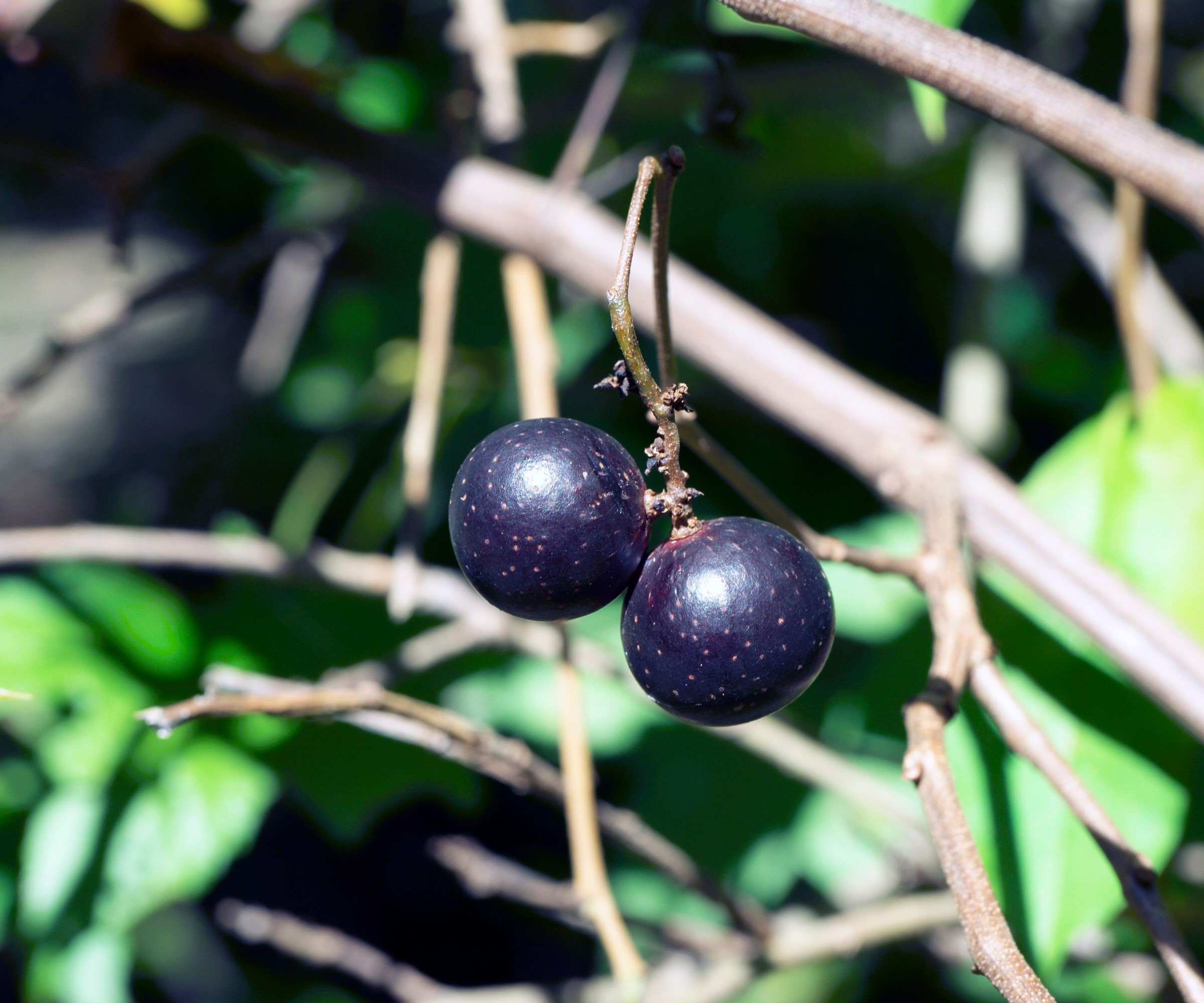
Ripe muscadine grapes can be almost black in color
How to plant muscadine grape vines
Getting the planting spot right is key to happy vines and a good harvest of grapes. Grape vines are regarded as one of the best foods to grow in a greenhouse, though muscadine grapes can happily grow outdoors in the warmer temperatures of southern hardiness zones. Warmth is vital to the happiness of these vines, they will not tolerate cold. The plants do not like single-digit temperatures and especially dislike ground temperatures dropping below 5°F.
Lindsey Chastain, founder of gardening blog The Waddle and Cluck, explains how an ideal position for muscadine grapes to thrive will be one with ‘full sun exposure’. She says: ‘They need at least 6-8 hours of direct sunlight per day. Dappled shade is okay, but too much shade will reduce fruit production.’
Too much shade will not only reduce the amount of fruit produced, but the vines themselves will desperately scramble in search of more light. They can be aggressive and swamp other plants as they seek more sun.
When it comes to the site, Lindsey adds: ‘These grapes prefer sandy, well-drained soils. Heavier clay soils should be amended with compost or other organic matter to improve drainage. The ideal pH range is 5.5-6.5.’
The ideal time to plant muscadine grapes is after the risk of frost has passed. Plants often come bare root and are best planted in late winter or early spring, while container-grown plants can be planted year-round, but will take more watering if planted in summer rather than spring.
Grape vines are climbing plants and muscadine grapes can eventually reach 40-60 feet in height, as well as being 20 feet wide. They need a structure to climb, usually they are grown up a trellis that is attached to a wall or fence. It is best advised to have the structure in place before planting the vine. Other potential support ideas for climbing plants include an arbour or pergola.
When planting the grape vine, dig a large hole that is around one foot away from the structure it will be trained to. Ensure that the top of the plant’s roots are an inch or two below the soil line, and pack soil around the roots and firm it in well before giving it a good water. Consider mulching around the plant with compost or leaf mulch to help retain moisture and reduce weed competition.

Lindsey started gardening in 2005, when her first son was born, as a way to save money. It started with a small window herb garden, then expanded to potted vegetables, and now, she and her husband can regularly be spotted in the garden on their homestead.
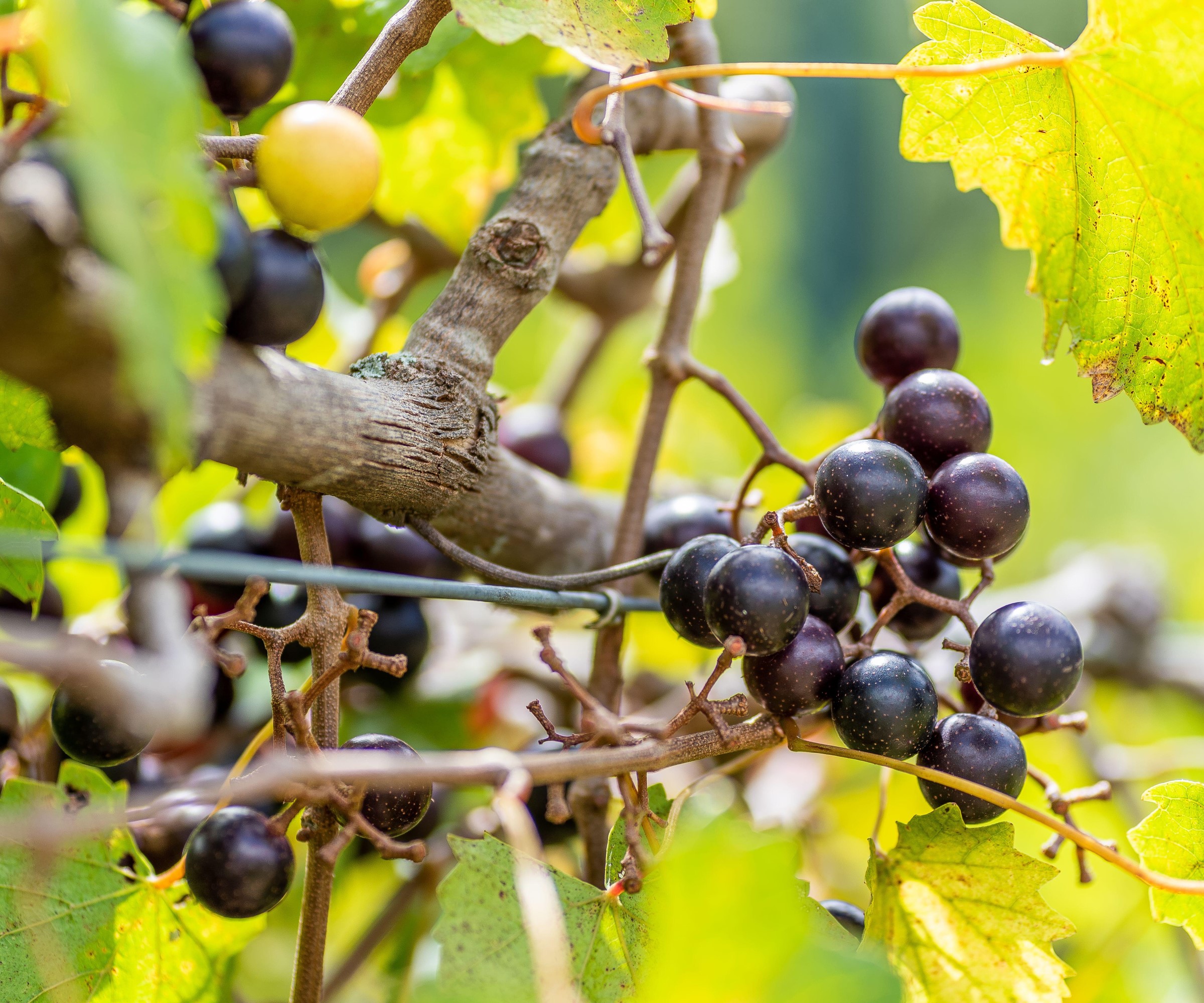
Muscadine grapes need to be trained to a trellis or other structure
How to grow a muscadine vine - care tips
One of the main maintenance tasks for growing muscadine grape vines is going to be proper pruning and training. After planting, cut it back to one strong vine and train this to the trellis using twine or soft ties, such as these soft twist ties available at Amazon - never use wire as this can damage the vines.
Experienced gardening expert Steve Bradley warns that grape vines left to grow can ‘soon become a tangled mess’ that produces little fruit and can be susceptible to pests and diseases. He says regular pruning and training keeps the vine in check and helps to produce healthy fruit.
Steve adds: ‘Grapes produce fruit on new growth that forms in the spring and summer, often up to several metres long. For the best results, aim to limit the number of bunches that develop in order to produce good-quality large grapes. The vines can be encouraged to fruit by training the main stems horizontally, which will also help to check the vigor.’
Common methods to train grape vines include growing them as a cordon, where single or multiple main trunks are attached to a framework and new fruiting shoots are trained off from these, or having one main smaller permanent stem from which fruiting arms come off and are replaced annually.
When it comes to how to prune grape vines, Ward Dilmore, the founder of Petrus Landscaping, recommends to ‘prune during the dormant season to remove dead or diseased wood and to shape the vine’. It is important to keep only the strongest canes and remove weak or broken ones, as well as dead or diseased wood.
Annual pruning of grape vines will ensure new fruiting wood is produced. The shoots are cut back each winter, with the aim for around one side shoot every six inches along the main stem. Plan for one bunch to develop on each shoot by trimming it back to two leaves past the fruit cluster once it sets during the summer.
Newly-planted muscadine grapes will need regular watering to get established, at least once a week, but once the vines are established they are quite drought tolerant plants. Cut down any watering during the colder months and do not overwater the vines as muscadine grapes do not like sitting in waterlogged soil. Grape vines do not need extra fertilizer when being planted, but do benefit from a feed with a balanced fertilizer in late winter or early spring each year going forward.
Grapes can be susceptible to pests including aphids and Japanese beetles, while outdoor vines may benefit from protection to stop birds from damaging the crop. Fungal problems including downy mildew and powdery mildew can trouble the vines, and these can be targeted with fungicidal treatments, such as this Multi-Purpose Fungicide Concentrate available at Walmart.
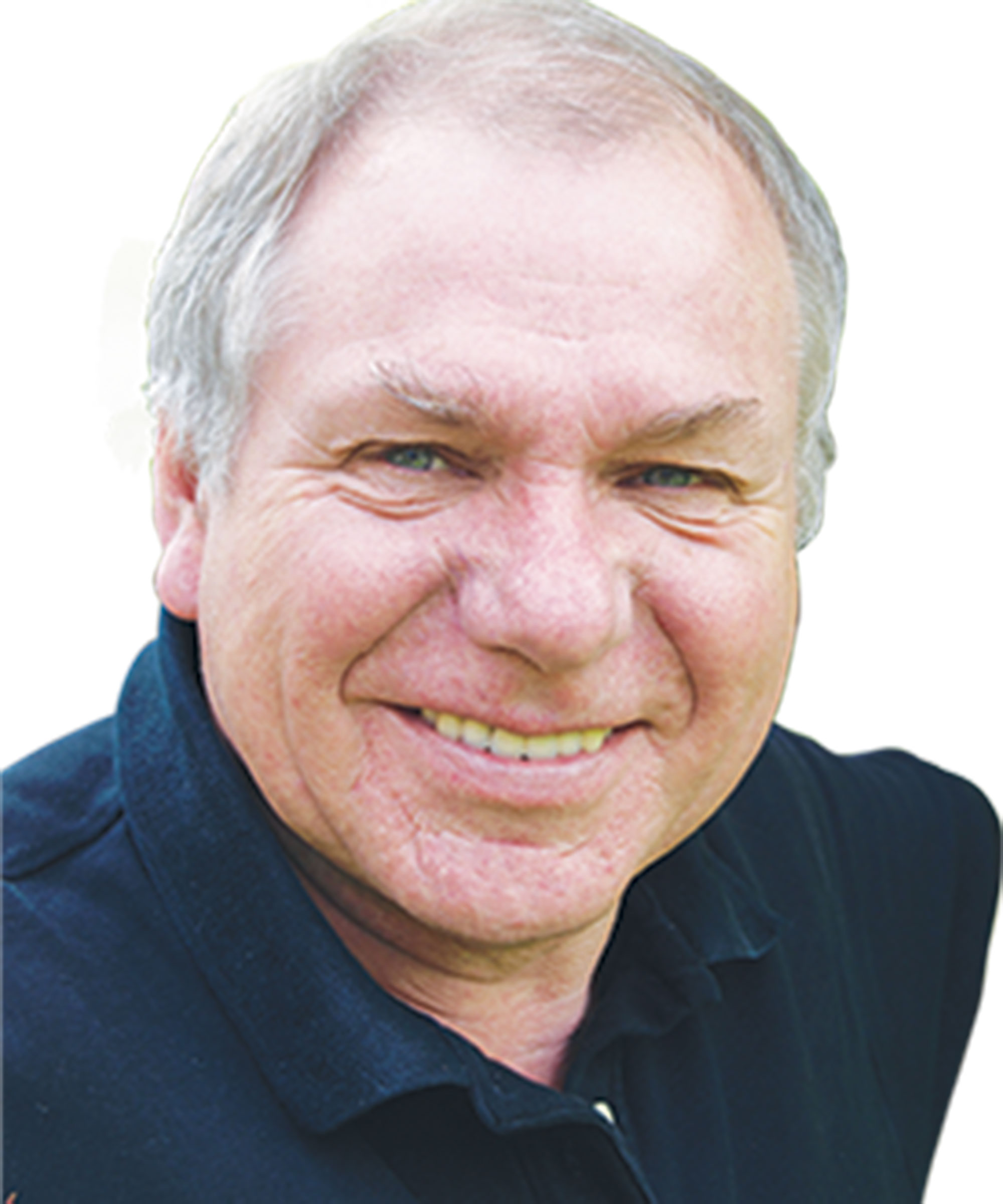
Steve has written (or co-written) over 40 practical gardening books. He has been Gardening Correspondent for The Sun newspaper since 2002, answering hundreds of readers’ letters every year. He also has a weekly column in Amateur Gardening magazine.
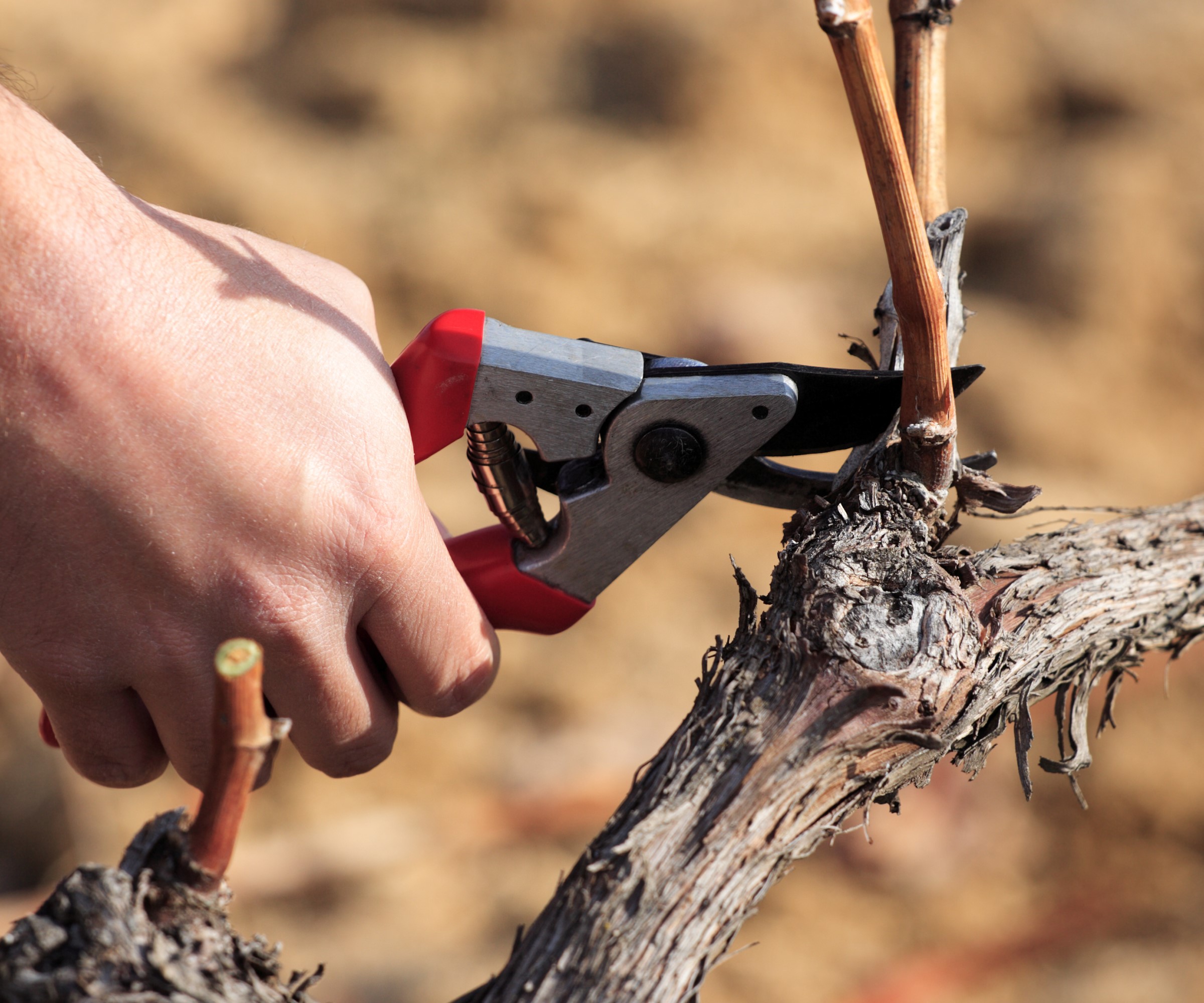
Pruning muscadine grapes is an essential annual task
How to grow muscadines from cuttings
Taking plant cuttings is a very successful way to get more muscadine grape plants. The method involves taking softwood cuttings, and the best time to do this is during the summer growing season. Only use clean and sharp pruning shears to take any cuttings, as using dirty or blunt tools is a plant cutting mistake that can risk the cutting rotting when placed in compost, or it be infected with disease.
Take a cutting of plant material around six inches in length and remove the leaves from the lower half. Trim the bottom of the cutting to a node and, after dipping the cut end in rooting hormone, available at Amazon, place it in a pot filled with compost. Cover the pot with a plastic bag to help to retain moisture and keep it in a bright spot, but do not place it in full sun. Roots should slowly form over two months.
Muscadine grapes can also be propagated by layering. To do this, simply bend a lower stem and bury it in the soil. Once the cutting has formed roots, it can be dug up and planted into a new spot.

Muscadine grapes can be propagated successfully from cuttings
How to grow muscadine grapes from seed
New grape plants can be grown from seed collected from harvested fruits. The seeds need to be separated from the flesh and then put in a refrigerator for three or four months. They can then be sown around half an inch deep into a pot filled with seed sowing compost and kept moist in a sunny spot.
Seedlings should be potted up once they can be handled and then grown in a larger container until they are ready to be transplanted into the garden. Growing grapes from seed is a long process, germination itself can take a couple of months and it will likely take a year until the seedling is large enough to be planted in its final spot.
FAQs
How long does it take for muscadine grapes to grow?
Patience is key when growing muscadine grapes as it can take a few years from planting a vine to getting a large harvest of grapes. The exact wait will depend on the size of the plant when it went in the ground, with larger container-grown plants likely the quickest to fruit once planted.
Vastly-experienced gardener and author John Negus says: ‘Grape vines often take three years to fruit and many newly planted vines are still getting established in their second year, fruiting in their third.’
Muscadine vines from rooted cuttings can take three years to produce fruit, while vines grown from seed can take up to six years. However, your patience is rewarded as muscadines are very productive once established and the vigorous vines can grow 3-4 feet during each season.

John has been a garden journalist for over 50 years. He has also written four books and has delivered many talks over the years on horticulture.
Grow any grapes and the vine will need regular training and pruning. The work involved can be worth it as they can make useful vegetable garden ideas, whether you grow the fruit to eat straight off the vine or to be turned into homemade wine, juice, or jelly.
Sign up to the Homes & Gardens newsletter
Design expertise in your inbox – from inspiring decorating ideas and beautiful celebrity homes to practical gardening advice and shopping round-ups.

Drew’s passion for gardening started with growing vegetables and salad in raised beds in a small urban terrace garden. He has worked as a professional gardener in historic gardens and specialises in growing vegetables, fruit, herbs, and cut flowers as a kitchen gardener. That passion for growing extends to being an allotmenteer, garden blogger, and producing how-to gardening guides for websites. Drew was shortlisted for the New Talent of the Year award at the 2023 Garden Media Guild Awards.
-
 These are the 6 must-have colors to decorate with in April 2025
These are the 6 must-have colors to decorate with in April 2025What do retro-inspired yellows and beautiful blues all have in common? They're on our hot list for the season ahead
By Sophia Pouget de St Victor Published
-
 Plants never to grow next to fruit trees
Plants never to grow next to fruit treesExpert advice on which plants to keep away from fruit trees to encourage a healthy harvest
By Jacky Parker Published